This is my ENG/undercover review of the RØDE Wireless Go II system, which features two transmitters (with built-in mics and recorders) and one receiver. So far, I have used it for two in-the-field interviews for the CapicúaFM show (audio only) and one “undercover” video example made specifically for this review. Of those two CapicúaFM episodes, one was done with RØDE’s own handheld attachments for handheld interviews, while the other was with two third-party handheld mics connected to each RØDE Wireless Go II transmitters, one directly and the other via an inline pre-preamplifier. I chose to do this review this way since so many colleagues (especially Curtis Judd, linked ahead) did such a tremendous job doing a general review on the RØDE Wireless go that it seems silly to replicate that work, when other applications (like ENG and undercover) were virtually uncovered by other reviews I have seen and heard. Spoiler alert: I love the RØDE Wireless Go II as a dual wireless system with inboard recording, especially in its US$299 price range.
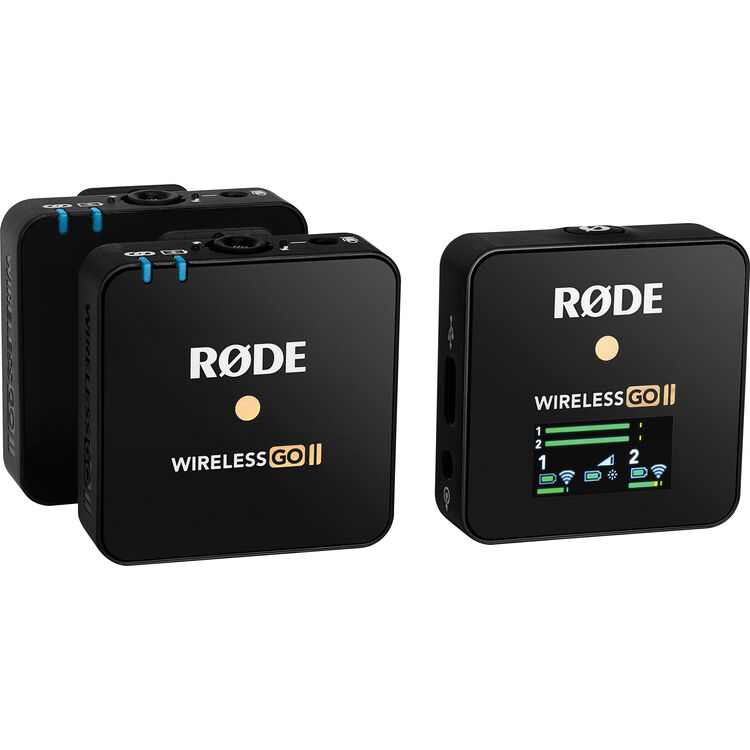
Built-in recorders in the transmitters?
Yes, the two transmitters included with the RØDE Wireless Go II system are also standalone recorders (as long a you have most recent firmware update), which can be used either as the only recorder(s) or as backup. Either way, they can each record at 48 kHz 24-bit WAV (uncompressed mono on each one) for up to 7 hours. Alternatively, if and when you need much more recording time, they can also record up to 24 hours at compressed quality. For my productions, I just use uncompressed WAV for production, since I generally need much less than 7 hours of raw recording time before transferring it off and erasing it to save space. I continue to applaud RØDE for continuing to offer exclusive 48 kHz recordings, while some other manufacturers and developers continue to do it wrong (non-standard). See 48kHzAlliance.com. After recording inside of these RØDE transmitter/recorders, you have the option to export files in various formats via the companion app. Those include formats such as MP3 or WAV (16-, 24-, or 32-bit float) with date and time stamp information as well as automatic markers anywhere the transmitter-receiver link was broken. However, I must clarify that the raw recording made is not 32-bit float, but 24-bit, so the 32-bit floating is mainly to be compatible with certain workflows.
EXAMPLE 1: recorded inboard in the RØDE Wireless Go II transmitter with the RØDE Interview GO accessories
In my first example, I used the inboard recording from the RØDE Wireless Go II transmitter’s recording, together with the optional accessory I purchased, known as the RØDE Interview GO (US$29).
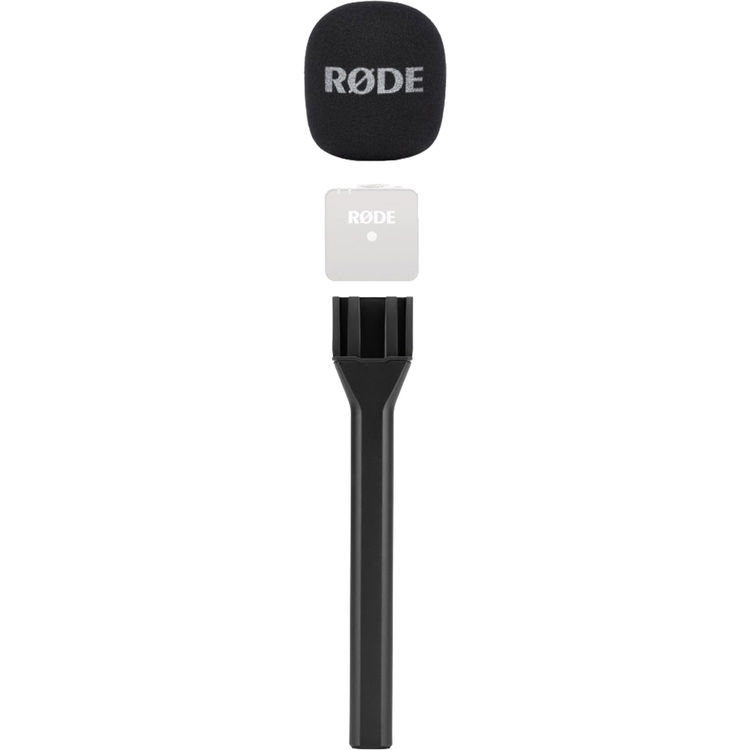
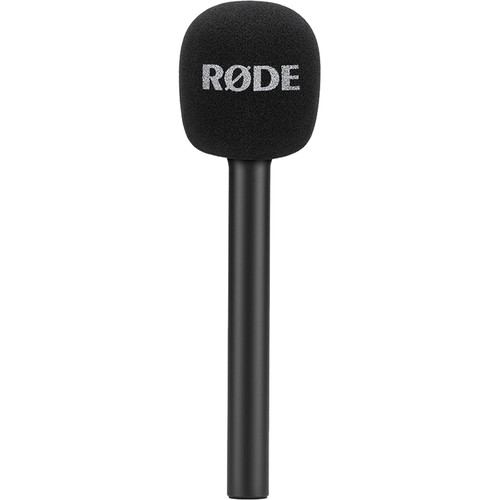
This kit includes a plastic handle and a specially shaped windscreen. The handle has a perfect length for field interviews: 23.7 centimeters (9.3 inches) and has a spot at the end specifically designed to attach one of the transmitters included with the RØDE Wireless Go II kit. The combination doesn’t look like a transmitter or a recorder, but it is actually a microphone, a transmitter and a recorder. After you attach the transmitter/recorder and turn on the power, you cover it with the included specially designed windscreen.
In episode 58 of my CapicúaFM show (embedded below for your convenience), I used the combination of a single transmitter from the RØDE Wireless Go II kit, mounted on the handle with the RØDE windscreen.
Audio PlayerIf you understand Castilian, you are welcome to listen to the whole show. However, from 00:00 to 4:14 it’s in studio (not recorded with the RØDE Wireless Go II) and the field recording begins at 4:15. Whether you understand Castilian or not, you’ll be able to hear the quality of the recording.
I recorded this interview on a park bench in Ponce de León Park in Coral Gables/Miami, Florida. The interview was author Nasbly Kalinina. Note that since there was a lot of vehicular traffic around the park, I used a special audio plugin to eliminate about 88% of that car noise inside of Hindenburg Journalist Pro (my favorite multitrack audio editor for conventional computers, covered in many past articles). I’ll be reviewing that plugin soon.
Complaints about the RØDE branding on the windscreen, solved two possible ways
I noticed many people complaining online about the big RØDE logo on the special windscreen included with the optional RØDE Interview GO. (It is quite special since it is among very few windscreens I have ever seen that has a custom rectangle-shaped hole inside instead of a round one, (even though the outside is roundish) so you probably won’t find any off-the-shelf windscreen —of the same size— to replace that windscreen included by RØDE.) Those online commenters complain because they don’t want to advertise for RØDE after paying for the wireless kit plus US$29 for the RØDE Interview Go. Fortunately, I have two solutions for that, which can be used either independently or together:
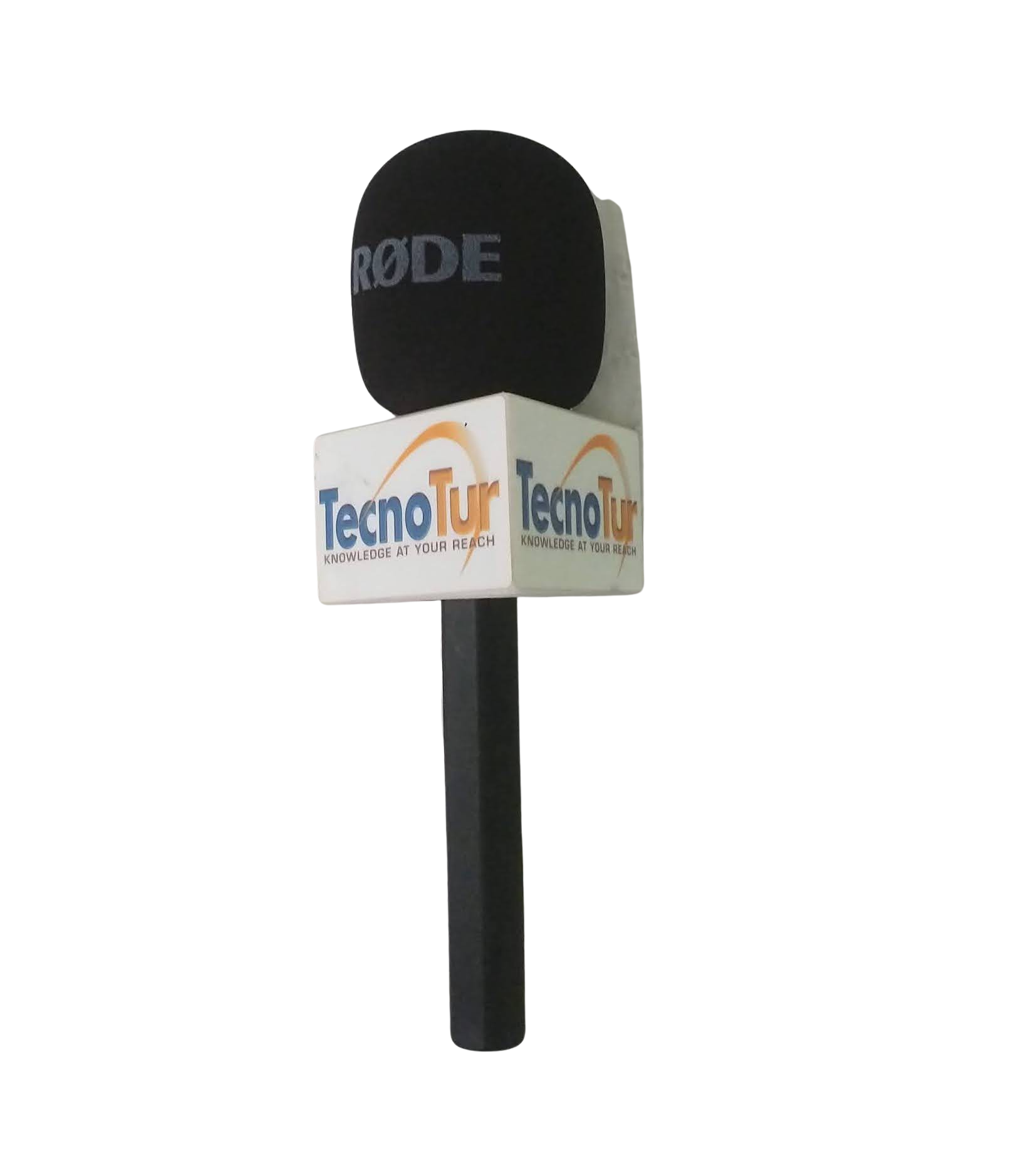
- Because of the good length of the handle (23.7 centimeters or 9.3 inches), the RØDE Interview GO, it’s plenty long to add your own mic flag, which will visually overpower the RØDE logo on the windscreen. Above, you’ll see a photo I took of the package with one of my TecnoTur mic flag added.
- For those who may still be upset about the RØDE branding, I have discovered that even though there is probably no off-the-shelf windscreen on the market —of the same size— to substitute the included windscreen included with the RØDE Interview GO, fortunately RØDE’s own WS2 windscreen fits fairly well with even more wind protection (since it’s much larger), and the WS2 is not branded at all. See the photo below for the package with the WS2 instead of the original windscreen.
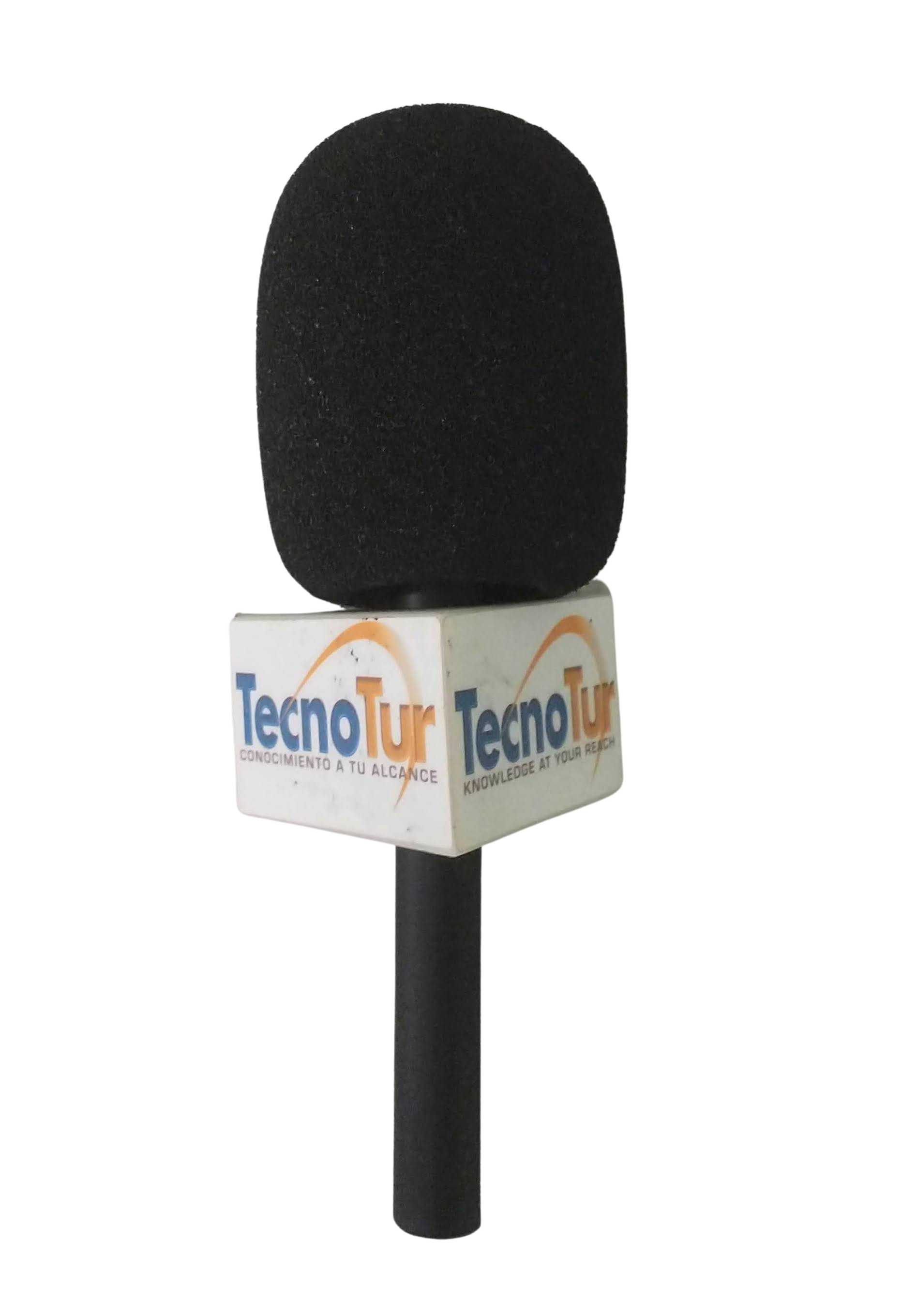
EXAMPLE 2: third-party handheld mics connected to each transmitter
I wanted to test both an external condenser microphone and a dynamic, both with a cardioid pattern as opposed to the omnidirectional pattern in the built-in mics in the transmitter/recorders and in the majority of lavalier mics that are available on the market. I knew in advance that the RØDE Wireless Go II transmitters supply bias voltage (“plugin power”) on the 3.5 mm TRS input, not 48 volts phantom power. Bias voltage is usually between 3 and 5 volts. That’s why —for the condenser mic, I chose the MXL MM130, since I knew that is among the very few XLR handheld condenser microphones which can work properly not only with 48 volts phantom power, but also with the much lower bias voltage (“plugin power”). Although the MXL MM130 is has two different patterns, I used it in the cardioid mode.
Fortunately, in my initial testing and during the actual interview you’ll hear ahead, the MXL MM130 worked great together with the transmitter included in the RØDE Wireless Go II kit. However, I did not use the MXL MM130’s included cable, since it is inappropriate in this situation. Instead, I purchased and used the Sennheiser KA 600 XLR female to 3.5mm TRS male cable shown below (≈US$20) which passes the low bias voltage (“plugin power”) from the transmitter to the mic:
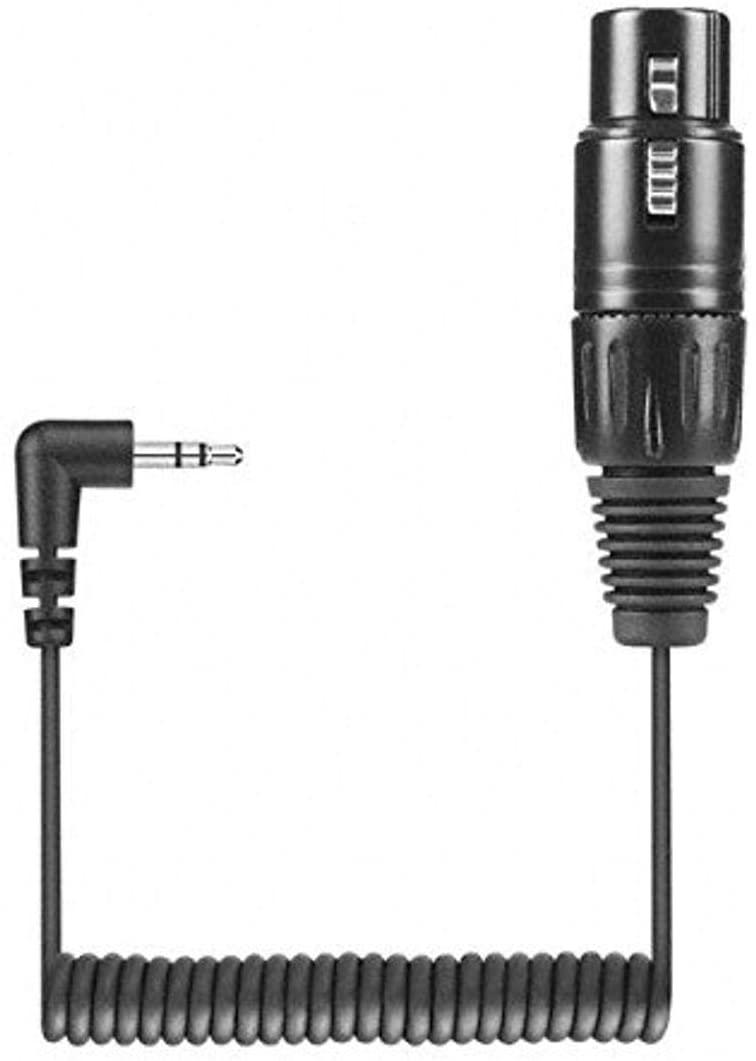
When testing the dynamic microphone prior to the actual interview recording, I determined (using proper care to block the bias voltage to protect the dynamic mic) that even at its maximum gain, the preamp in the RØDE Wireless Go II transmitter/recorder does not have enough gain to be used ideally with dynamic microphones, nor has RØDE ever stated the contrary. At least that is the case with the current firmware. As a result, I purchased and used the relatively new iRig Pre 2 pre-preamp from IK Multimedia (to be reviewed soon), which boosts the balanced signal from the balanced dynamic microphone and delivers the boosted signal via a 3.5 mm plug, which I connected to the mic input on the RØDE Wireless Go II transmitter. I made sure the phantom power was OFF, performed proper gain-staging and everything was great as you’ll hear ahead.
For this two microphone in-field recording, I did not use the separate recordings in the transmitters this time. This time, I took the USB output of the RØDE Wireless Go II’s receiver and I plugged it into my 14” Chromebook. Unlike the USB output of the RØDECaster Pro mixer/recorder (covered in many past articles) which does not currently work with a Chromebook using the latest official firmware, the USB on the receiver included with the RØDE Wireless Go II indeed works perfectly with a Chromebook. So I recorded using the Auphonic Android app on the Chromebook, and was happy to see that in Auphonic’s autodetect mode, it displayed our absolute standard of 48 kHz, so both the Chromebook and the Auphonic app were recognized as 48 kHz. See 48kHzAlliance.com and CombinedHosting.com for more information about that. I intentionally set the RØDE Wireless Go II’s receive to deliver the two signals separately and made a fake stereo recording by setting the Auphonic app to “stereo”. Later in Hindenburg Journalist Pro, it was only a single click to separate the fake stereo track into two separate mono tracks. Then I used Hindenburg Journalist Pro’s new Magic Levels feature to do most of the heavy lifting to match the two separate source levels most of the time, requiring only occasional manual overriding.
I used this interview within episode 57 of my CapicúaFM show. The interviewee is Eliana Ferrer of MKT. For your convenience), you can hear the results below.
Audio PlayerIf you understand Castilian, you are welcome to listen to the whole show. However, from 00:00 to 4:53 it’s in studio (not recorded with the RØDE Wireless Go II) and the field recording begins at 4:54. Whether you understand Castilian or not, you’ll be able to appreciate the quality of the recording.
EXAMPLE 3: Uncover video at an outdoor Cuban café in Miami, Florida
In Miami Cuban-speak, the world cafetería is different from its meaning in other countries in Castilian or in US English. In Miami Cuban-speak, the word cafetería refers to a window with a counter facing outwards, where people order and purchase coffee and other drinks and food. The customers are outside, although sometimes under an awning.
For this recording, Colombian voice-over talent Sandra Pulgarín volunteered to go “undercover” at a Miami cafetería. Sandra had the Wireless GO II transmitter hidden in her dark blue blouse and I was a half block away pretending to be checking my email in my smartphone while I was actually shooting Sandra’s activity and fending off questions from a concerned security guard who had a walkie talkie in hand and the word Liberty on his shirt. The transmitter Sandra used also had the included artificial “dead cat” windscreen. In the recording, we do not hear the security guard’s voice since the only active microphone is the hidden one in Sandra’s blouse: There was no active microphone near the camera where I was, so we see him, but we do not hear him. Of course, we do hear other voices, like the voice of the cafetería’s attendant since she was so close to Sandra. Sandra asks the attendant what types of coffee are available, orders a cortadito, inquires about closing time is, whether they also sell bottled water, whether she must pay with a card, the minimum purchase with a card, and other small talk. Sandra’s dialog begins nine seconds into the video. We can hear the attendant’s responses, although a bit softer.
The above video was recorded at 4K UHD at 25p (a recurring theme in ProVideo Coalition since 2008) using FiLMiC Pro for Android. The receiver from the RØDE Wireless Go II fed my smartphone digitally via a USB-C cable. I did not shoot at 4K UHD with any intention of publishing it as 4K UHD. I did it in order to be able to do stabilization in post and later publish as 720p at 25p after a crop during the stabilization..
Curtis Judd’s general review
Please click here for Curtiss Judd’s general review on the RØDE Wireless Go II. He did a tremendous job as always.
Ratings
Appearance and build quality

Audio recording quality

Within its price range.
Ease of use and pairing

Digital and Analog connectivity (for recording) for any platform including digital connection with Chromebook

Latency free monitoring from receiver

Direct connectivity with external condenser mics that accept bias voltage (“plugin power”)

Direct connectivity with dynamic mics
At least with the current firmware, you should use a pre-preamp as I did. If RØDE boosts the gain further with a future firmware update for this application, I’ll update this article and publish another one.
Conclusions
As stated in the introductory paragraph, I love the RØDE Wireless Go II dual mic/recorder. I may be the first reviewer to use it for audio only, i.e. for an online radio show which is also syndicated as a podcast. I applaud RØDE for continuing to innovate and offer great products —at a great price— with exclusive 48 kHz audio sampling, our absolute standard. See 48kHzAllaince.com for more info. My only suggestion to RØDE is to offer more available gain for direct use with dynamic mics in a future firmware update… but only if the hardware permits it.
(Re-)Subscribe for upcoming articles, reviews, radio shows, books and seminars/webinars
Stand by for upcoming articles, reviews, books and courses. Sign up to my free mailing list by clicking here. If you previously subscribed to my bulletins and no longer receive them, you must re-subscribe due to new compliance to GDPR. Most of my current books are at books.AllanTepper.com, and my personal website is AllanTepper.com. Also visit radio.AllanTepper.com.
Si deseas suscribirte (o volver a suscribirte) a mi lista en castellano, visita aquí. Si prefieres, puedes suscribirte a ambas listas (castellano e inglés).
My new Telegram channels are:
- In English, t.me/TecnoTurBulletins
- En castellano, t.me/boletinesdeAllan
FTC disclosure
No manufacturer is specifically paying Allan Tépper or TecnoTur LLC to write this article or the mentioned books. Some of the other manufacturers listed above have contracted Tépper and/or TecnoTur LLC to carry out consulting and/or translations/localizations/transcreations. Many of the manufacturers listed above have sent Allan Tépper review units, including IK Multimedia, MXL, RØDE and Sennheiser. So far, none of the manufacturers listed above is/are sponsors of the TecnoTur , BeyondPodcasting CapicúaFM or TuSaludSecreta programs, although they are welcome to do so, and some are, may be (or may have been) sponsors of ProVideo Coalition magazine. Some links to third parties listed in this article and/or on this web page may indirectly benefit TecnoTur LLC via affiliate programs. Allan Tépper’s opinions are his own. Allan Tépper is not liable for misuse or misunderstanding of information he shares.
Copyright and use of this article
The articles contained in the TecnoTur channel in ProVideo Coalition magazine are copyright Allan Tépper/TecnoTur LLC, except where otherwise attributed. Unauthorized use is prohibited without prior approval, except for short quotes which link back to this page, which are encouraged!

Filmtools
Filmmakers go-to destination for pre-production, production & post production equipment!
Shop Now











